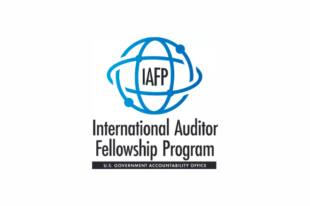SAI Costa Rica, IDI Assess “Bridge to Development”

The Supreme Audit Institution (SAI) of Costa Rica, in coordination with the International Organization of Supreme Audit Institutions (INTOSAI) Development Initiative (IDI), executed a performance audit in 2016 to analyze the effectiveness and efficiency of “Bridge to Development (BTD),” a national strategy designed to care for families in extreme poverty. With the increased emphasis on auditing the implementation of Sustainable Development Goals (SDGs), this coordinated audit, now, more than ever, holds additional significance in that it addresses SDG 1: No Poverty.
Analyzing BTD included assessing the strategy’s compliance with proposed goals during its first two years of activity (2014-2016); studying the main familial socio-demographic and economic characteristics; investigating the flow of goods and services from participating institutions to families in extreme poverty; and examining Presidential Social Council (PSC) improvement measures.
BTD STRATEGY AND IMPLEMENTATION
The BTD aimed to identify and measure poverty conditions using a wide variety of sectors and agencies. Eight institutions comprised the initial group gathered to assess essential areas based on a multi-dimensional poverty measurement perspective, including: family access to the social protection system; development of capabilities; links to employment; technological advantages; and proper housing and territorial development.
To execute the BTD, the Mixed Social Welfare Institute (IMAS) created social cooperator figures who, acting as connections between families in need to the organizations responsible for supporting them, are key to ensuring families receive the necessary assistance as outlined in a customized Plan of Family Intervention (PIF), the instrument that records each family’s needs and commitments.
Identifying and assisting families living in austere conditions was executed in four phases:
Phase One: Family Eligibility
Phase one involved defining the actions necessary to identify families in priority districts living in extreme impoverishment and confirming these families also matched the BTD profile, which stipulates that families meet at least one of the following characteristics: female head of household with underage children; disabled relatives residing in the home; responsible for elderly adult care; and unemployed head of households.
Phase Two: PIF Formulation
In this phase, social cooperators responsible for strategy management, devise each family’s PIF. The social cooperators conceive the PIF to track basic achievements that relate to minimum quality of life conditions the family must reach by the end of the program.
Phase Three: PIF Implementation and Evaluation
Phase three finds families performing the tasks to which they have committed. IMAS records any progress and provides necessary references to participating institutions to ensure families have access to as many benefits possible.
Phase Four: Family Exit
This is the final phase where the family has fulfilled basic achievements (minimum of 90%) as identified in the PIF.
AUDIT RESULTS
Audit results indicate the BTD strategy was effective in identifying and selecting families. Records show a compliance rate of 100.5% (the established goal to incorporate 27.300 families was exceeded as 27.449 families were classified and selected).
Outcomes also illustrated that the population defined in accordance with the BTD profile was highly successful with 79% as female heads of household and 67% lacking full-time employment. Statistics also showed 87% had not completed a secondary education.
However, as of June 30, 2016, there was a low level of progress associated with families reaching the PIF basic achievement measures—only 22.7% PIFs were completed, while 33.5% were recorded as in process, and 43.8% saw no progress whatsoever.
Strikingly, 47% of the families had not met any of the established basic achievements at the time of the audit.
Regional Areas of Social Development (ARDS), an organ within IMAS, took 89 days (on average) to develop each PIF. This delay directly impacted families’ ability to fulfill the basic achievements and creates a potential risk of non-compliance.
 With such a high percentage of families not reaching any basic achievements within the established two-year time frame prior to successful discharge, introducing a second round of families to participate in the program (2017-2018) makes realizing the 4-year BTP target seemingly impossible.
With such a high percentage of families not reaching any basic achievements within the established two-year time frame prior to successful discharge, introducing a second round of families to participate in the program (2017-2018) makes realizing the 4-year BTP target seemingly impossible.
A lack of opportunities in accessing benefits was also noted. According to PSC guidelines, references for support were to be processed based on priority and resolved within a maximum of 30 working days.
However, of the approved references, only 44% fell within the 30-day range, while 29% were approved between 31-60 days, 12% between 61-90 days, and 15% took more than 91 days for resolution.
These prolonged approval periods also impacted families realizing basic achievements.
Despite establishing a system of quarterly reports and monthly newsletters, audit results determined that these tools were more informative and descriptive in nature rather than evaluative. The products were also based on partial results, thus unable to provide sufficient data to affect the decision-making process that could impact target populations in the short-, medium- and long-term.
Because there were no reporting guidelines, of the 37 Monitoring and Evaluation Team (EME) reports audited between July 2015 and June 2016, only two included information on limitations and improvement measures. None of the reports included focus error indicators (exclusions, leaks); PIF preparation times; supporting institution response times (and reasons) to references made by cooperators; achievement status; and budget allocations.
The audit results point to significant improvement opportunities, which were positively received by Costa Rican government authorities responsible for the BTD strategy.
Additionally, mandatory compliance recommendations were issued to the Republic of Costa Rica’s Vice President, who serves as PSC coordinator and IMAS Executive Chairman (responsible for BTD implementation).
These opportunities come at a crucial time. As the BTD has reached its two-year mark, implementing SAI Costa Rica’s recommendations can help advance the strategy’s efficiency and effectiveness, resulting in a greater impact on those living in extreme poverty.
With the collaboration and assistance of IDI mentors, this audit product also conforms to International Standards of Supreme Audit Institutions (ISSAIs).





